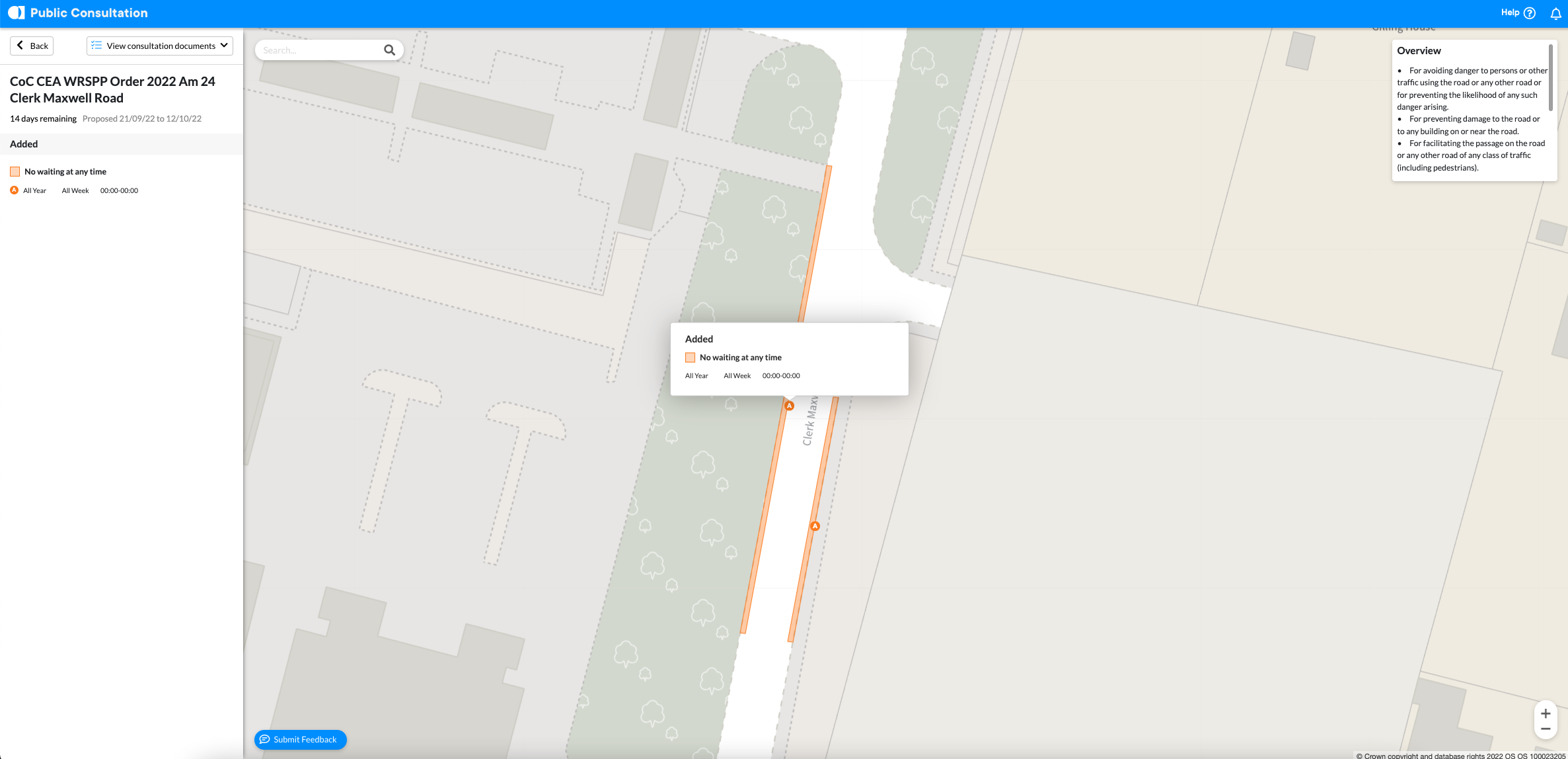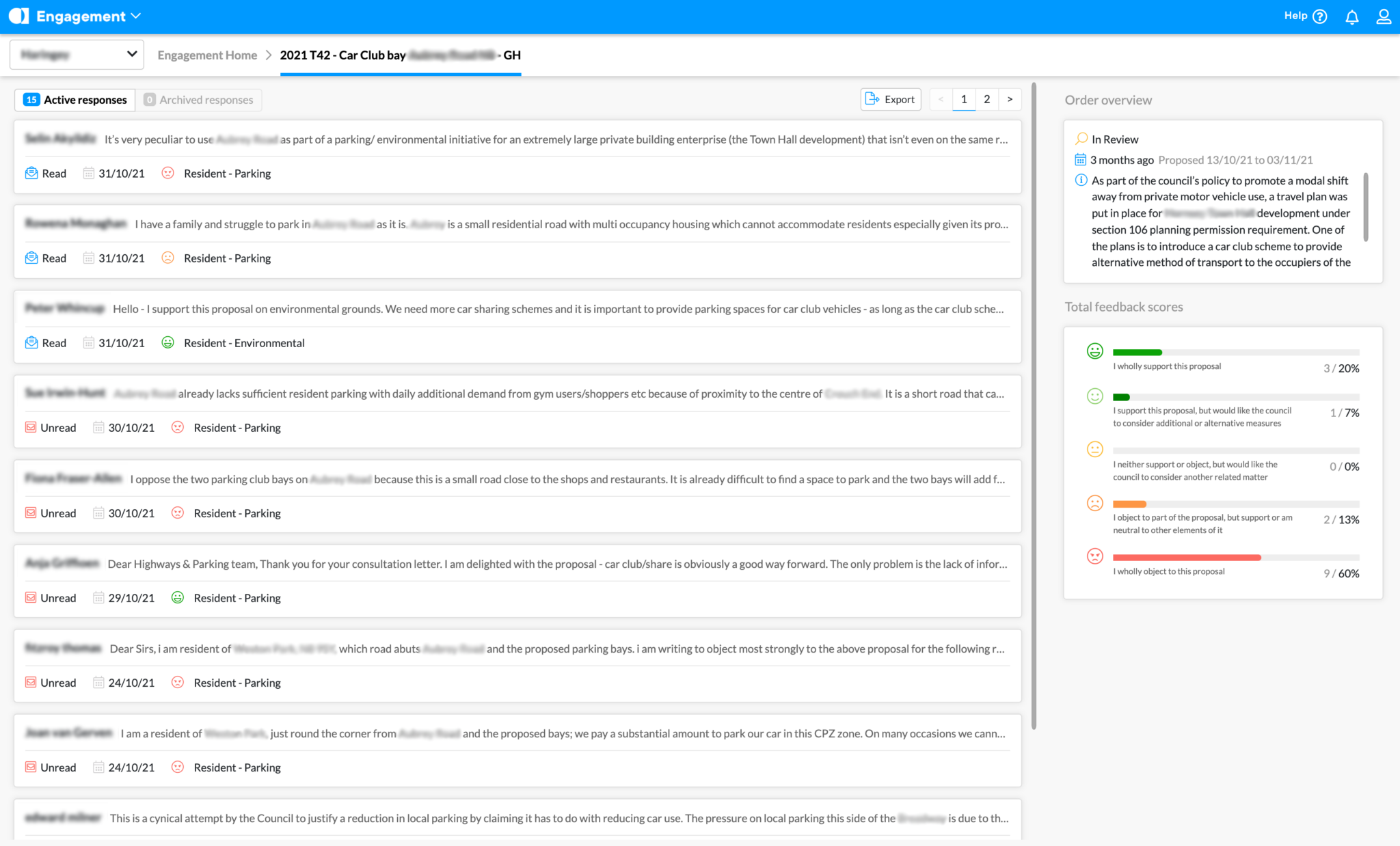Region
Cambridgeshire

Cambridgeshire
894,300
2230
£937m
Andi Caddy
Policy and Regulation Engineer, Traffic Management Service
With a population of roughly 894,300 in what is a predominantly rural area, Cambridgeshire County Council manages roughly 4500km of carriageway, including 3,300km of public Rights of Way – one of the largest such networks in England.
Cambridge City is unique in that it is recognised as one of the cycling centres of Britain and enjoys high levels of active travel. However, the County experiences heavy pressures on its road network because of its location as a haulage and distribution industry centre and sees a heavy reliance on private motor transportation.
Additionally, Cambridgeshire operates one of the longest guided bus systems in England with plans for future upgrades in support of net zero objectives. With Cambridgeshire’s continuing growth, new rail stations have been brought online including upgrades to Huntingdon rail station, an exploration into the re-opening of Wisbech rail and the potential construction of a Cambridge South station in support of the Addenbrookes Biomedical campus.
As one of the fastest growing counties in Britain, pressures on traffic management are unprecedented. Cambridgeshire produces more than 150 traffic orders per year. Unfortunately, only a handful of their processes were digitised. The council kept working with paper traffic orders for most of their work, only using digital traffic order software for Cambridge City.
With so much going on Cambridgeshire County Council needed a kerbside management solution, or traffic order management solution, that was truly fit for purpose, enabling them to manage traffic orders efficiently and flexibly across the entire county.
Fortunately, Cambridgeshire now adopts a digital first approach where possible, and the management of Traffic Regulation Orders was no different. An early adopter of map-based orders; the council were looking for a system that could be used for the whole of the county as well as the Cambridge City. It had to be web based, accessible for traffic order stakeholders, intuitive for users, cost effective and importantly, offer the council time savings.
Cambridgeshire turned to AppyWay and their traffic order management solution, Traffic Suite. AppyWay was well known to the council via the Innovate UK project The Parking Platform. This project helped create the Traffic Suite and Cambridgeshire was invited to work with AppyWay and Coventry City Council and Milton Keynes Council, providing council feedback and comments during the suite’s build.
By adopting AppyWay’s Traffic Suite, Cambridgeshire County Council has achieved significant cost savings as well as time savings when producing traffic orders. The Traffic Suite offers the authority a one-stop-shop for its traffic order management. Officers are able to digitally draw up and consult upon traffic orders from concept through to completion in one easy to use platform. By moving away from written orders and using a digitally drawn map, officers can be confident that what has been created is legally sound.
Cambridgeshire County Council’s processes were only partially digital. The council found that they were still working with paper traffic orders for the majority of their work and only using digital drafting tools for Cambridge City. This meant record keeping, Freedom of Information requests and finding one source of truth were one of their key challenges. Additionally, physically interpreting traffic orders proved challenging if they were in a written format and did not include any map images.
This meant large, complex orders became increasingly difficult to draft. They were also becoming increasingly difficult for other teams, systems and the public to understand. AppyWay’s Traffic Suite, in particular the traffic order creation tool Mapper, has helped the council overcome these challenges associated with a paper-based traffic order process.

Sample of the Mapper user interface for Haringey Council
”The creation of large-scale orders is easier, and it’s meant that we can iron out some of the inaccuracies present in some of the historic written orders – be it issues with the historic writing styles, updated road names or changes to the road layout that have unknowing affected the Orders (e.g. junction realignments screwing defined distances).
Stephen MarshallPolicy & Regulation Technical Administrator, Traffic Management Service
Having the data available on the Streets platform also aids the answering of, data based, queries from members of the public and ensures transparency.
Prior to the use of AppyWay’s Traffic Suite, Cambridgeshire County Council found larger scale schemes incredibly time-consuming. These schemes often required a lot of traffic order maker resources from drafting and amending, all the way through to consultation and completion. The consultation process alone could take 2 to 3 order makers to manage, taking this resource away from implementing other schemes and initiatives.
With Traffic Suite, Cambridgeshire have been able to enjoy the easy to use, intuitive functions that the suite offers. Through Mapper, the team can easily batch create and modify orders, saving them a huge amount of time. In Engagement, the team at Cambridgeshire can see how consultations are going at a glance and easily share consultation responses with the relevant people, and with Streets the traffic management service has enabled colleagues across the council to easily self-serve traffic order information.


Sample of the Engagement user interface for Cambridgeshire County Council
”I think in the short term there are massive efficiencies that can be realised internally by digitising our traffic orders with Traffic Suite. Already I am not just saving time making orders in Mapper, but also by reducing internal queries by allowing colleagues to self-serve traffic order information using Streets. In the medium term I’d like to expand our service offering to incorporate certain backend functions in our Parking Services.
Andi CaddyPolicy and Regulation Engineer, Traffic Management Service
The benefits of the AppyWay Traffic Suite extend beyond the traffic order makers and engineers. Teams including Highways Projects, Parking Services and Maintenance are all benefiting from the suite, in particular it’s easy to understand data output displayed via the Streets platform. By empowering them with this data and helping them in their roles, the traffic management service has subsequently eased the pressures they often experienced when delivering information from written traffic orders.
The Cambridgeshire Traffic Management Centre and Street Works teams are also in the process of integrating with the suite. This means the traffic management service can further improve collaboration and visibility across more of the council.

Sample of the Streets user interface for Haringey Council
”It represents a total step change in the way that the team operates now and in the future. Helpfully, it has broken down some siloes within the organisation and made us much more visible to other internal teams and external stakeholders.
Andi CaddyPolicy and Regulation Engineer, Traffic Management Service
Having worked previously with AppyWay for the Innovate UK Parking Platform Project, the traffic management service at Cambridgeshire County Council could see the potential of Mapper and the suite from very early on. This created an excellent foundation where the team at Cambridgeshire were confident in AppyWay’s ability to deliver a solution that met their needs.
The team at AppyWay have lots of experience working closely with and in local authority teams. This level of expertise and understanding ensured that Cambridgeshire’s onboarding to the Traffic Suite was smooth and seamless.
”The team at AppyWay provided a smooth onboarding process and supported us every step of the way. Mike and the team have a background in working with local authorities so know what kind of pressures we deal with on a daily basis. I look forward to working with Mike and the team in future weeks and months, forging a strong collaborative partnership, as we work to continually improve the traffic management capability of Cambridgeshire County Council.
Andi CaddyPolicy and Regulation Engineer, Traffic Management Service
Prior to having their moving and static orders surveyed, Haringey Council was faced with data inaccuracies and a lack of confidence that what was on street matched what they had on record. Now that they have an accurate record of their traffic order data in both Mapper and Streets, Haringey have been able to realise a number of efficiencies, including a marked reduction of internal and external enquiries.
In moving to AppyWay’s Traffic Suite, Haringey saw an opportunity to future-proof their traffic orders. By digitising and standardising their order data, Haringey have been able to harness the power of machine-readable, shareable traffic order information. The data is now much more accessible across the council and for residents, and is available to fleets, driver apps and connected and autonomous vehicles via API.

Get the traffic order suite built for today’s challenges.